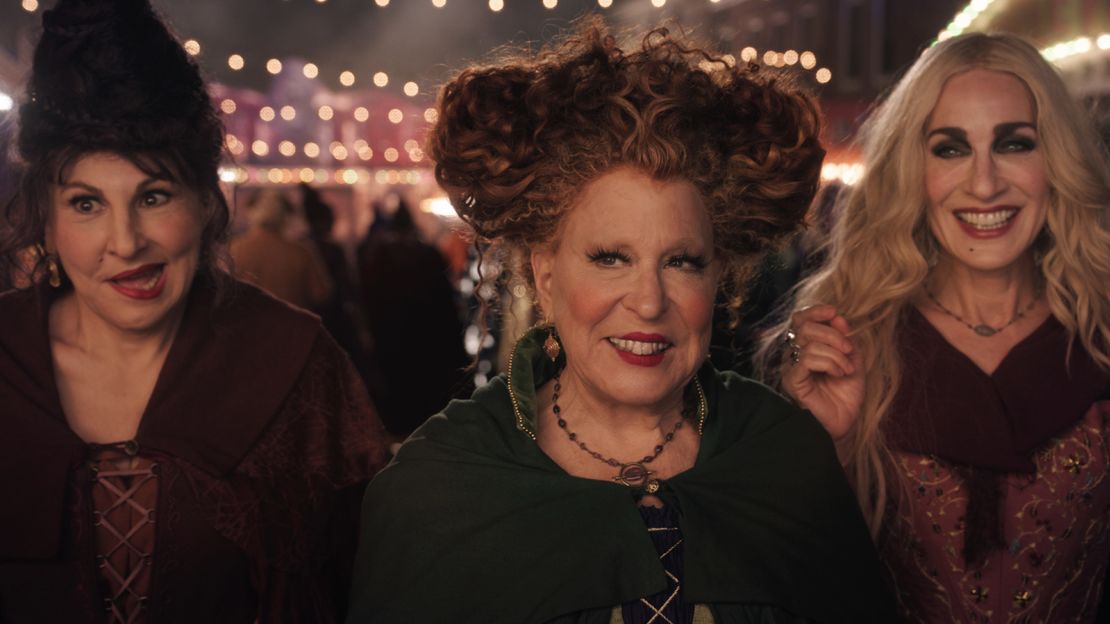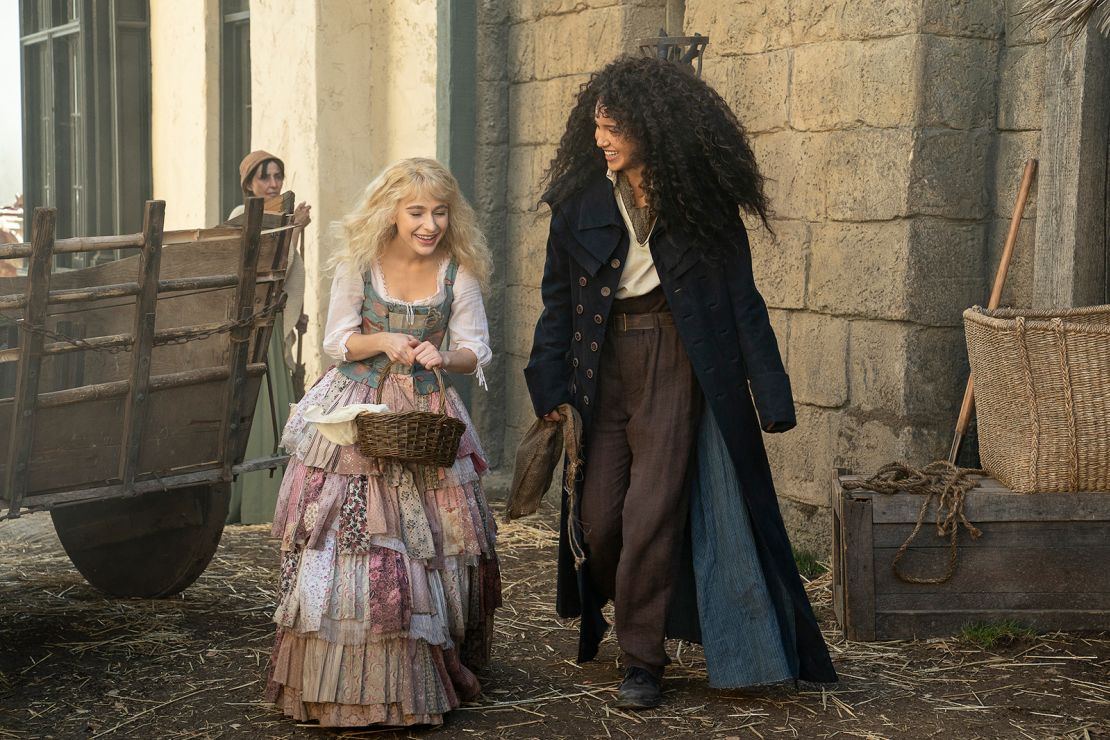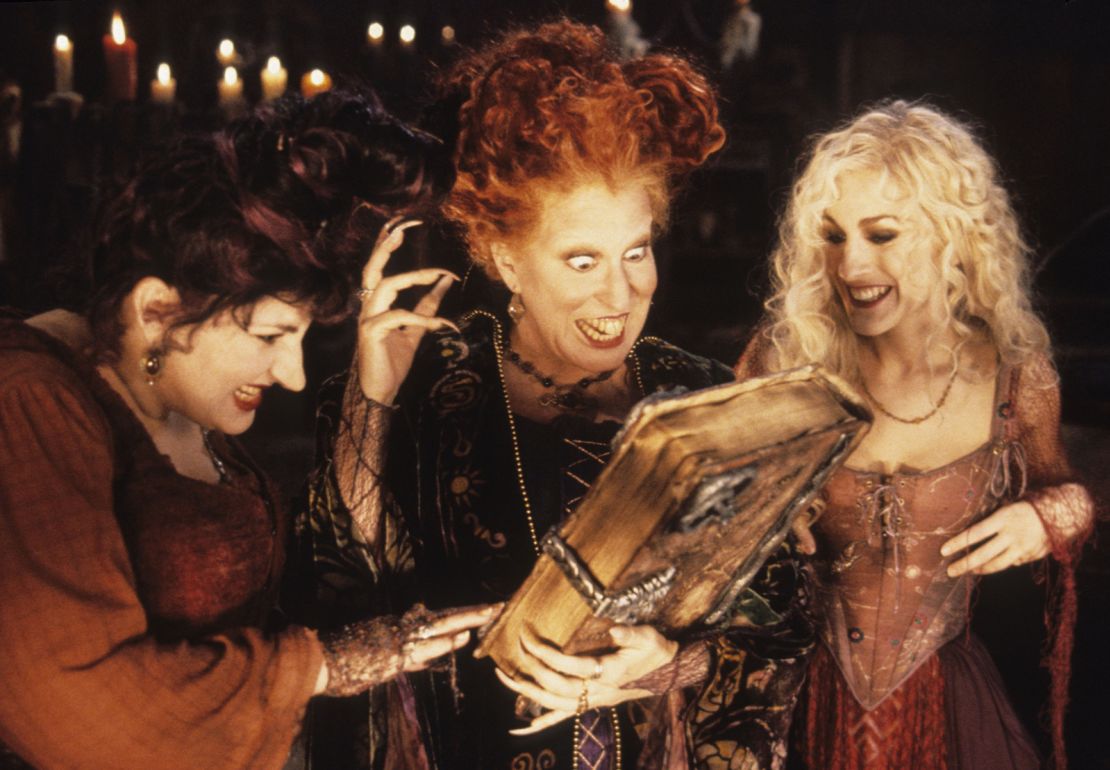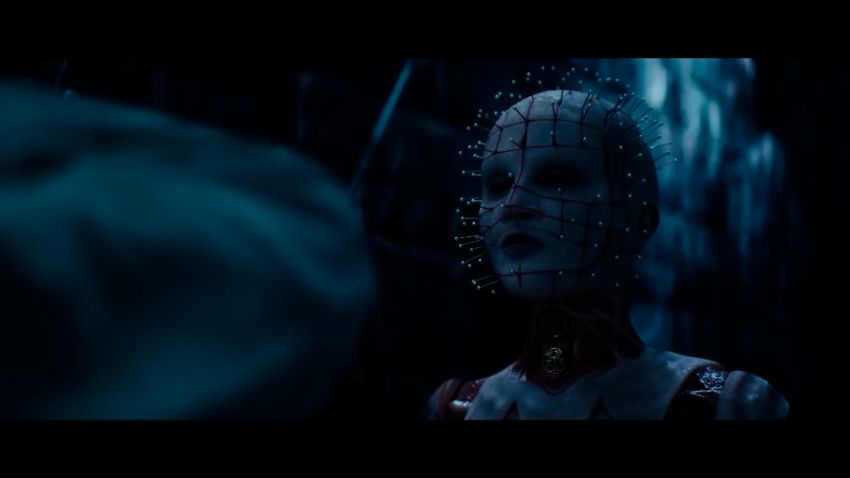Editor’s Note: Holly Thomas is a writer and editor based in London. She is morning editor at Katie Couric Media. She tweets @HolstaT. The opinions expressed in this commentary are solely those of the author. View more opinion on CNN.
There’s a time and a place for empathy. On a plane with a screaming baby, when a sick colleague leaves work early and when friends blithely announce plans for a destination wedding, a little empathy can go a long way. As I recently discovered, however, there is one occasion from which empathy should be banished forever: Halloween.

How did I come to such a sweeping conclusion? By watching the two major kids’ movies on offer this season: Disney’s “Hocus Pocus 2” and Netflix’s “The School for Good And Evil,” the latter based on the children’s book series of the same name. The first – a sequel to the seasonal fan favorite starring Bette Midler, Sarah Jessica Parker and Kathy Najimy as the Sanderson sisters-cum-coven – attempts to explain away the witches’ misdeeds with an origin story about the inhabitants of Salem being mean to them. The second goes to enormous trouble attempting to define good and evil, only to conclude that none of us can truly be either, really.

In both cases, the effect is an ineffective, watered-down message that robs kids of the chance they get every fall to thrill at a glimpse of true darkness – and the satisfaction of defeating it.
Take “The School for Good and Evil.” The (very) well-trod premise is this: Agatha and Sophie, best friends who are shunned by the populace in their candy-colored ye olde town, are summoned by magic to the school. Sophie, the “good” friend, is “accidentally” deposited in the School for Evil, while Agatha, the “bad” friend, winds up in the School for Good.
The schools are training grounds for fairy tale characters. Students are supposed to learn how to reach their goodest or evilest potential as appropriate, before duking it out in adventures that form the base for classic stories we all know and love, like “Peter Pan” and “The Legend of King Arthur.”
“But wait,” a vaguely observant 8-year-old might interrupt. “Neither of those are fairy tales!” That’s correct – and far from the stupidest or most unsatisfying element of this film.

You’re supposed to be able to tell that Agatha is being set up as the baddie because she’s wearing trousers and is constantly shamed for being “ugly” and unpopular. This would be all very well were it not for the fact that Agatha is conspicuously pretty (which baddies of course, are not supposed to be) and kind. Sophie, her friend, is blonde and wears pastel-colored dresses, which as any Disney fan could tell you, are classic “goodie”-coded qualities. Confusingly though, she’s also selfish and takes pride in her appearance (which is sinister).
I’ll not ruin the rest of the plot, but effectively we’re left with a “Shrek” meets “She’s All That” meets spooky season melange of which the sum is far worse than any of its parts – and which doesn’t have the excuse of having been made in the almost ubiquitously problematic late 1990s and early 2000s. “Good doesn’t necessarily look beautiful and bad doesn’t necessarily look ugly” is a moral films for kids and teens have been attempting to communicate with varying success for decades, and though it’s a noble one, it requires finesse. Lacking an iota of this, “The School For Good and Evil” would have been much more fun and more appropriate to the season if it’d featured a school of actually evil kids, intent on actually slaughtering the school of good kids.

It’s not as though kids can’t handle a bit of malevolence, especially the camped-up version Halloween is such a perfect forum to showcase. The original “Hocus Pocus” film, which came out in 1993, featured the Sanderson sisters – witches banished to the woods outside 17th century Salem – sucking the life out of a little girl and being hanged, before being resurrected in the present day, only to be burned alive and eventually turned to dust and stone.
In the 2022 follow-up, the witches are still theoretically the villains of the piece, but they’re set up as sympathetic from the start – and the film climaxes with an emotional outburst of love and mourning from Winnie (basically the chief witch) for her sisters after discovering her quest for power has cost them their lives. Her regret is relatable (who among us hasn’t bawled upon realizing the consequences of our actions), and the clear cue is that the audience, like the kids who’ve been battling the witches for the entire movie, should feel sorry for her.
But why? As any younger viewers of “Hocus Pocus 2” will soon discover, life is brimming with opportunities to encounter messed-up people who make stupid choices, and to relate to them more often than most adults would care to admit. Of course it’s important to teach children about the complex layers that make up our personalities, and how our early experiences might inform bad behavior later in life. But not at Halloween.
Halloween is a time of wonder, of curses, ghouls and dark magic, a time to let rip and fantasize. It is a rare license to dress up and cosplay as someone (or something) else, forget our mundane worries and attach our fears to monsters more terrifying than anything we’re likely to encounter in real life. And, if we’re lucky, to see them thoroughly vanquished.



